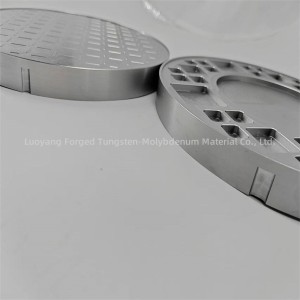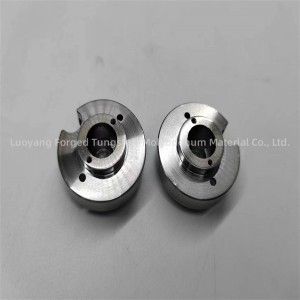Mo1 Laboratory Use Molybdenum Crucible Purity 99.95%
Molybdenum crucibles are typically manufactured using one of two main production methods: Powder metallurgy: This method involves mixing molybdenum powder, pressing it into the desired crucible shape, and then sintering the compacted powder in a high-temperature vacuum or hydrogen atmosphere. This process helps achieve the required density and structural integrity of the crucible. Machining: In this method, the molybdenum rod or rod is machined using cutting tools and CNC equipment to carve out the desired crucible shape. This method is often used to produce smaller or custom-shaped crucibles. In both cases, additional processes such as heat treatment, surface finishing, and quality control checks may be performed to ensure that the final crucible meets the required specifications. These processes produce high-quality molybdenum crucibles suitable for a variety of high-temperature applications, such as melting and casting metals, sintering ceramics, and other heat treatment processes.
Molybdenum crucibles are widely used in high temperature applications, especially in industries such as metallurgy, glass manufacturing and material sintering. Here are some specific uses: Smelting and casting: Molybdenum crucibles are often used to smelt and cast high-temperature metals and alloys such as gold, silver, and platinum. Molybdenum's high melting point and excellent thermal conductivity make it an ideal material for withstanding the extreme temperatures involved in the metal melting process. Sintering: Molybdenum crucibles are used for sintering of ceramic and metal powders, where high temperatures are required to achieve densification and grain growth. Molybdenum’s inertness and its ability to withstand high temperatures without reacting with the material being processed make it a suitable choice for sintering applications. Glass manufacturing: Molybdenum crucibles are used in the production of specialty glasses and glass ceramics. Molybdenum’s high thermal stability and inertness ensure that it does not contaminate the material being melted, making it an important component of the glass-making process. Semiconductor production: In the semiconductor industry, molybdenum crucibles are used for the growth and processing of single crystals, such as silicon and other semiconductor materials. High purity and resistance to chemical reactivity make molybdenum ideal for these applications. Overall, molybdenum crucibles are valued for their high temperature resistance, chemical inertness, and durability, which makes them vital in a variety of industrial and scientific processes involving extremely hot and reactive materials.
| Product Name | Mo1 laboratory use molybdenum crucible purity 99.95% |
| Material | Mo1 |
| Specification | Customized |
| Surface | Black skin, alkali washed, polished. |
| Technique | Sintering process, machining (tungsten rod hollowing processing) |
| Meltng point | 2600℃ |
| Density | 10.2g/cm3 |
Wechat:15138768150
WhatsApp: +86 15236256690
E-mail : jiajia@forgedmoly.com













